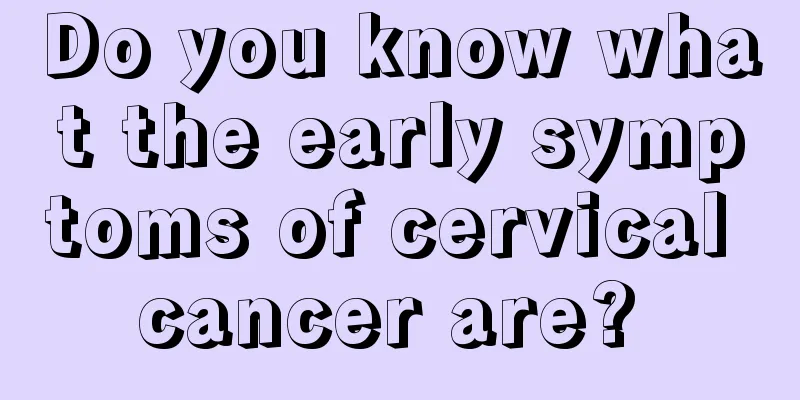Symptoms of poor venous return

|
Venous reflux is very common in daily life, but if the situation is serious, it may even directly endanger life safety, so people need to have a full understanding of it. Venous return may be the result of multiple factors, but once this happens, you need to pay attention to it immediately and choose appropriate methods to adjust it. If it is serious, you need to seek medical treatment and adopt scientific treatment methods. 1. Vein Veins exist to carry blood from arteries to various parts of the body back to the heart. The path of venous blood is the way home. The left and right atria of the heart are the home of venous blood. Starting from the micro-capillaries, passing through the rugged road with small blood vessels, heading towards the asphalt road with thick blood vessels, then stepping onto the broad road of the inferior vena cava, coronary sinus, and pulmonary vein, finally returning home. 2. Symptoms of poor venous return In terms of anatomical structure, veins are also divided into three layers, but unlike arteries, they are much thinner. The inner membrane folds inward to form wrinkles that look like small crescents and are called venous valves. The blood flow in the media is slow, ensuring the balance of total blood flow per unit time. The outer membrane can also withstand some pressure, but it can be easily flattened, causing obstruction of reflux. Venous valves are characteristic structures of veins and are unique and indispensable. They usually appear in pairs, that is, "bi-leaflet valves", located at the end where blood flow enters. When the blood flows toward the centripetal direction, the venous valve clings to the venous wall like a gecko; but when the blood on its way home suddenly does not want to go any further, blood reflux occurs, and the two-leaf venous valve will hold the hands tightly, blocking the pressure and allowing it to continue to flow toward the centripetal direction. Therefore, the function of venous valves is to prevent blood from flowing backwards. The lower limbs have the most venous valves. This is because the blood in the lower limbs is subject to the greatest gravity when it returns. The blood here is the most inert. It is wrong to just go with the flow and stay here. Over time, venous return is obstructed, which can cause congestion, swelling, and edema of the lower limbs, and may even lead to congestion, varicose veins, and blood clots. Venous blood return is driven by many factors: venous valves, tension of vessel walls, pressure of muscle contraction, pressure of heart contraction and relaxation, etc. |
<<: Methods for stopping venous bleeding
>>: Method for sealing intravenous catheter
Recommend
How to remedy a cracked olive pit
Olive kernel bracelets are also a common cultural...
How long does it take for the swelling to go down after ankle fracture surgery
Many people often sprain their ankles due to care...
Different types of clinical manifestations of Hodgkin's lymphoma
Hodgkin's lymphoma can be divided into five t...
Tuberculosis Isolation Measures
There is an infectious disease area in the hospit...
The downside of Yan Feimei
Smoky eyebrows are a type of eyebrow shape when t...
What is the cause of death from brain cancer
The cure rate of malignant tumors has greatly imp...
Is scalp massage effective in preventing hair loss?
Moderate scalp massage can effectively prevent ha...
White vinegar can lighten semi-permanent eyebrows
Many friends find that their eyebrow tattoos fail...
What to do if your skin is flooded
Skin flooding may be caused by skin inflammation,...
Can I use vinegar when washing my hair?
Nowadays, every household has vinegar. Vinegar ha...
Good hospital for treating bone cancer
How to judge a good hospital for bone cancer trea...
What kind of light does not hurt the eyes
With the continuous advancement of science and te...
What are the main treatments for lung cancer? It is recommended to use 4 methods to treat lung cancer
Lung cancer is a disease that many people fear, m...
How to treat rheumatic heart disease, surgical treatment is effective
Rheumatic heart disease, which we usually call rh...
What is the best way to brush your teeth?
In the health care of the body, every link and ev...









